We see fast hand movements, swaying hips, cocky raised eyebrows and colorful clothing - but this is just the tip of the iceberg that could describe the voguing dance style. To be more precise, vogue is much more than a dance; rather, it is an art, a sport and a way of life. Heroine decided to figure out where this trend came from, which dancers are worth following, and why even those who have never danced should try it.
Where did wog come from?
Initially, voguing was danced mainly by black drag queens from Harlem in the 70s. They admired the rich white women in fur they saw on the streets and tried to imitate them in closed nightclubs. Exaggerated gestures, complex poses - all this was a way to caricature the wealth and privilege of women. After some time, they began to add makeup, feminine clothes and complex hairstyles to their scenes, and the result of a series of posing was called “vogue” in honor of the famous fashion magazine.
For drag queens of the time, voguing became an escape, a way to forget the pain and oppression they faced. But besides this, it was a celebration of their Beauty.
— Kevin Omni Burris
The most valued quality of a voguing performer was realness - realism, the ability to look heterosexual in clothes that are not of the same gender. Ruthless judges and a screaming crowd reward only the one who completed the task best. Gradually, vogue began to acquire new elements, gymnastic tricks, gestures and clothing styles. Harlem balls became a new culture for black people who did not want to live a modest lifestyle in the ghetto. And in order to avoid clashes with street gangs, community members began to unite in “houses” - a kind of dormitory.
What is home?
While gangs used guns to decide who was boss in the area, the queer community fought through dance. Already in the 80s, the first houses appeared, which later became legendary: House of LaBeija, House of Dupree, House of Xtravaganza, House of Ninja, House of Omni and House of Ebony.
Every home must have a Mother and Father, and to occupy this position, one had to be a “legend” of balls with a dozen trophies. The children were members of the community who had lost a roof over their heads and no family support. Rejected gays, trans and lesbians could unite into a new family, take new surnames and together maintain life in the same apartment, jointly earning money to pay bills and food.
In turn, the organizers of parties and balls monitored the safety of all members of the community, ignoring internal conflicts at the balls - none of the “children” should have been hurt on the street or died without the ability to pay medical bills.
Vogue became a way to express one's identity through an artistic form in a situation where external forces threaten life itself. The AIDS epidemic in the mid-1980s hit the community hard. Despite the fact that at that time people did not openly admit their orientation even to themselves, gays, lesbians and bisexuals became the group with the highest risk of getting HIV infection. The dancers joked: I have lost 454 friends due to this disease. No, 455, I forgot about Paris! Some balls were dedicated to the fallen members of the community, others were a way to escape from the harsh reality and enjoy the precious days they had left.
In the 90s, the culture began to spread in Paris, and from there throughout Europe. The concept of houses has taken root much less well there, because the need for support among LGBT people in Europe is much less than among people of color in America. In Russia, the house began to have a slightly different context - it usually means the high status and dancing skills of the dancers, and in some houses there may not even be a single person belonging to the LGBT community.
Read on topic: How to be tolerant of LGBT people if you yourself are heterosexual
Trends in contemporary dance for the next decade.
According to the American Dance magazine and Russian experts.
When we first read the article "Calling It: The Dance Trends We're Predicting for the '20s" , our editors perked up.
We wanted to take on this challenge and make the same selection regarding trends in the Russian context of modern dance. Our review will, of course, differ. You probably thought: of course, America has a richer history. A lot of things have already happened there, changed, disappeared and been reborn again. But no, this is not our main argument. First of all, the difference is that the forecasts for the Russian context were made by experts, and not by the editors of the magazine. You know the names of these people well; they are the creators and leaders of famous and significant dance projects in Russia.
To get started, we have prepared a short translation of the trends for you. There are only 7 of them. Next you can read our version.
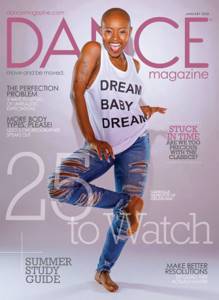
©Dance magazone o1/2020
Trend #1: Tap Dance Renaissance.
The basis for this statement was new names: starting with the famous dancer Michelle Dorrance , who today is no longer the only tap dancer who sets the fashion for this trend, as well as the return to the stage of Ayodele Casel , who dances tap even brighter in her 40s than before in young age. The magazine also mentions Dormeshia Sumbry-Edwards , who demonstrates how stylish female tap dancing can be, and, finally, Caleb Teicher , who actively experiments in this genre with sounds and gender roles.
Trend #2: Wake up ballet.
The debate surrounding the assertion that the choreography of classical ballets should not be edited has been going on for a long time. Keepers of traditions insist that if you change even one detail in the choreography, then how to determine where the boundary is at which to stop these changes without destroying the original. However, the successful example of Phil Chan and Georgina Pazcoguin's ( "Final Bow for Yellowface" ) shows how a classic ballet can be updated with respect to the original. Although in Russia this trend, according to the editors, is likely to linger.
Trend #3: A generation of dancers/scientists will emerge.
Choreographers have been collaborating with scientists on various projects for a long time. But lately we've been hearing about more dancers who not only collaborate with scientists - they themselves work in science and high technology.
A former ballet dancer with the Zurich and Boston Ballets, Merritt Moore , who received her PhD in quantum physics, is aiming to become an astronaut, and may well achieve it. She has several peers with similarly impressive careers. For example, Maya Man , an accomplished hip-hop dancer and technologist at Google, worked with Bill T. Jones to explore how new technologies empower artistic expression.
In the next decade, Dance magazine believes, many types of scientific fields will use the unique knowledge of dancers.
Trend No. 4: Dancewear will become more and more diverse.
Some manufacturers have already begun creating pointe shoes and leotards in a variety of skin tones, and brands that don't yet offer a full range of nudes may have to play catch-up. We expect plus-size to become more accessible soon. And we wouldn't be surprised if there were more men's pointe shoes, as well as clothes designed with gender neutrality in mind, for those who don't fall into the leotard/pink tights or white T-shirt/black tights pairings.
Trend No. 5: Emphasis on the health of dancers.
Dancers today are hungry for knowledge on how to get the most out of their bodies, and fortunately, there are more and more experts in the field of dance medicine. Ten years ago, for example, if you were looking for a nutritionist with a real dance background, options were limited. Now you can find many who not only understand the consequences that the body undergoes in dance, but also know the specifics of dance culture.
Something we don't see enough of yet: mental health care for dancers. However, as more people talk about the psychological effects of a dance career, expect to see more experts in the field.
Trend #6: There will be more female leaders.
The new Dance Data Project aims to share real statistics about how many leadership opportunities women have in ballet. Unfortunately, the numbers look pretty grim right now. But we hope that in the next decade more women will take on the responsibilities of directors and choreographers.
Trend #7: More creative and interesting dance performances.
The more people become addicted to social media, the more they want to experience unique real-life events. Even if only to show it later on your Instagram. We expect to see more dance projects in museums, factories and apartments, more intimate immersive and more interactive productions, as well as other ways to present dance to audiences who will no longer sit silently in the theater.

VYACHESLAV NIKOLAEV, team of educational projects Dance Academy Russia
Lately we have often heard about entering a new decade, especially from our colleagues and educators from the United States. In this regard, it was expected and interesting to read Dance Magazine’s forecasts.
Let’s leave the commentary about the conservatism and “sound sleep” of Russian ballet to the relevant specialists. It is interesting for us to note that most forecasts about the further transformation of dance are directly related to the process of further dissemination of the principles of Contemporary dance: attention to health and anatomy, collaboration of dance and technology, movement of dance beyond the stage. There is a feeling that we have already experienced all this in the past decade, both in Europe and (later) in Russia. Meanwhile, the United States has its own path, its own strong traditions, so from the new decade, despite all the “unnewness” of the forecasts, we should expect interesting processes for all of us. What is the revival of the Broadway classic “West Side Story” in New York from Anne Teresa de Keersmaeker ( Rosas company, Belgium ). I would believe that from the future, the countdown to the new decade for world dance will rightfully begin with the premiere of this production.
“If we pay attention to the Russian context, as we see it from the side of education in modern dance: our dance community is entering the new decade in “good shape” as never before.
Some of our colleagues celebrated the New Year in Costa Rica , and some in India , where advanced modern dance festivals are currently taking place. Often we find ourselves at festivals by invitation, scholarship, as guest artists and teachers, or organizers and curators - obviously, over the past decade, our community has become an increasingly welcome participant in educational and artistic processes around the world. This means we will spend the new decade being an active and important part of the global dance community. Let's make our contribution to all those processes that are now being so actively predicted.
It remains important to say that this is the merit of everyone who devotes themselves to dance every day in Russia and Russian-speaking communities - much more than just the past decade.
DAR events and educational programs on social networks: Vkontakte, Instagram
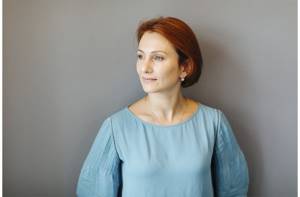
I will answer each point:
I don’t see much tap dance in Russian productions yet, although it’s a pity, it would be great! I hope for multi-genres and greater freedom of production. Freedom both in plastic (physical) content and in the choice of forms and ways of expressing ideas. Nowadays there is indeed a very large and open market for festivals, classes, and workshops. Dancers and choreographers see and receive a huge amount of information, I hope this will be reflected in their work.
I don’t know about the dominance of the female half (at the head of companies), but there are a lot of female choreographers and that’s great!
I agree that the search for materials, images and ways to translate them into costumes and production design is growing and will continue to grow.
About the classics. It, of course, will remain unchanged in the repertoire of famous theaters, but they also strive to update editions, sometimes returning to older versions that look new in these days. Paradox. Author's editions of famous classical titles (Swan, La Bayadère, Giselle, Sleeping) are also staged.
“I would like to note the thirst of both dancers and choreographers for creativity, for any, the most incredible opportunities.”
Mandatory appearance of dance (movement) in dramatic, opera and other productions. The plot is increasingly becoming non-linear, the story itself is not so important - it is no longer a simple reflection of reality, but an attempt to create something new, something of our own. The musical and artistic parts become not integral, auxiliary components for the dance, but full-fledged “participants” of the performance along with the choreography.
Read the latest news about Context events. Diana Vishneva on social networks: Facebook , Instagram

What trends await us? In some ways, I can agree with the American article, in particular, that there will probably be more and more immersive projects and projects in unusual spaces - site-specific , in museums, with paintings, sculptures. This trend is growing because it is actually being activated by museums themselves. For them, any activity is an additional means of attracting the public. Exhibitions are not such a simple matter; they cannot be changed frequently. And to do a performance in one hall, in another, in the courtyard of the museum - I’m sure this trend will only develop.
As for Russian dance, I think that more and more smart people will come to dance. I attribute this to the fact that there are people for whom dance is not only a plastic expression, but also a certain message, message, philosophical thought. For them, the path of performative dance is open, and I see how many people rushed there. They see prospects for themselves there. You can approach this in different ways, it is better, of course, for both the body and the head to work.
About the Renaissance of tap dance. Well, let's just say that in America it never really died out, because mastering the tap dance technique makes it possible to get a job on Broadway. For many people this is an opportunity to make good money. For our country, I would not say that this is a really relevant topic, because... We simply don’t have a market for musicals on the same scale as in America.
“I think we will have in some ways a certain renaissance of jazz dance, especially for educational purposes. I associate this with the program that we are implementing today at the Boris Eifman Dance Academy , and before that we implemented it with the first Cannon Dance (the generation of Anna Ozerskaya, Alisa Panchenko, Yulia Kryukova). It was a multi-layered training of dancers, and it began with jazz dance. You may not agree with me, but I see it this way: the jazz dance technique will return in one form or another, because it is a very good tool for dancer training.”
Great interest in ballet is also noticeable today. This is evidenced by the number of amateur groups and ballet schools that open for children and adults. Many people simply enjoy practicing classical ballet. And this trend will also grow.
If we talk about Europe , it is more difficult to understand the trends here. For many choreographers, getting closer to the dramatic theater is a path that someone has already taken, and I think will continue to do so. In Russia, this is most likely due to the fact that the infrastructure of modern dance is not as developed as in the drama theater. Inviting a choreographer who can perform unusual movements for the actors is interesting. Let me give you examples of Oleg Glushkov, Sergei Zemlyansky, Anna Zakusova. Surely many other choreographers have this experience. And I think it's all for the good.
In conceptual dance, a certain trend is also emerging, when choreographers are becoming more interested in “pure dance”. But in order for him to return in a high-quality version, high-quality performers are also needed. And here, in my opinion, there are suppliers of good dancers to the European market, mainly Italy, Spain, and Portugal.
Read the latest news about Open Look on social networks: Facebook , Vkontakte e

ELENA TUPISEVA
Director of the Ballet Moscow Theater
It seems to me that in the future the boundaries between ballet and modern dance will blur. There is already a clear trend emerging: many ballet companies are increasingly collaborating with contemporary dance choreographers, and ballet dancers are increasingly required to be versatile and knowledgeable in various dance techniques. I think that it is to meet such demands that education in the field of dance will change, and especially the program of the faculties training performers - to prepare technically universal dancers. Ballet and modern dance penetrate each other's territories, aesthetically influence each other and exchange accumulated experiences.
The influence of technology will also be noticeable and the achievements of scientists in the field of virtual reality will not bypass ballet and dance.
“Virtual reality will not completely replace the performing arts, but will complement and change our perceptions and views. It will help make the art of ballet and dance more accessible to the viewer, and will also expand the geography of the audience of each theater or dance company.”
Read the latest news about the events of the Ballet Moscow Theater on social networks: Facebook, Instagram

It's easier to stay positive when talking about the future of dance than when thinking about the future of ecology or politics. It is unlikely that the editing of classical ballets to give them political correctness, which is now happening in the United States, is our near future, and neither are men's pointe shoes.
But the latest trend—the entry of dance into public spaces—applies to our private spaces as well. As well as the expansion of the dancing audience towards greater inclusion.
As for dancewear, we will follow Western fashions.
And I came up with another trend - there will be more animated dance and dance videos.
“And the emergence of dancer-researchers who engage in art and write PhD by Practice about it is not yet a trend, but my dream.”
You can get acquainted with Irina’s works on the website postnauka.ru , current news in her group: Facebook
©Dozado dance magazine, 2020
Text prepared by Svetlana Polskaya
Why did voguing become popular outside the LGBT community?
Gradually, people who had nothing to do with dance or queer topics began to show interest in voguing. In 1989, host Suzanne Bartsch hosted the Love Ball as a way to raise funds to fight AIDS. She liked to attend such events, as she herself said - they know how to create something out of nothing. This ball turned out to be a breakthrough in the fashion industry, and the girl began to encourage brands to support houses and compete with each other. The next party was attended by Iman, Naomi Campbell and Madonna, and it was after this ball that the main musical hit of 1990 appeared - the song Madonna - Vogue. A year later, the documentary film “Paris is Burning” was released, which received the main prize from the jury at the Sundance festival and grossed $4 million at the box office. Some members of the community condemned it because the director of the film was a rich white woman, but it was thanks to her work that even those who were not directly affected by this topic learned about voguing.
Belly dance
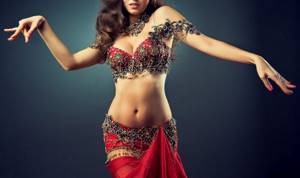
This form came to us from the East. Another name is Rax Beledi. Despite the name, this beautiful dance involves not only the stomach, but also any other part of the body. Although the main emphasis is still on hip movements.
When most of us hear about Raks Beledi, we immediately imagine dancers in cropped tops with a full skirt or bloomers. The traditional name for this costume is bedla. In cultures where the belly is not allowed to be shown, a dress is worn. Sometimes a belt is worn around the hips to emphasize dance moves.
Fact: Rax Beledi is not only beautiful, but also good for health, because it helps develop the flexibility of the spine and strengthen the torso.
Which stars are into vog?
Gradually, Vogue's influence on modern pop culture increased. The reality show RuPaul's Drag Queen Race has been released, increasing the visibility of the transgender community as a whole. Singer FKA Twigs began demonstrating voguing moves at all her concerts. One of Nike's latest advertising campaigns put voguing on the same level as sports competitions. Amazon legend Leiomi appeared in Will Smith's daughter Willow's video for the song "Whip My Hair", and ten years later she appeared in a music video again, this time in Russia, in the video "Mood Color Blue".
Foreign dancers look with surprise at what is happening at Russian balls. Vogue has become a key trend in most dance schools, and even children have begun to master it - just take the viral performance of Eva Uvarova, one of the participants in “Dancing on TNT.” At the same time, these performances were not a protest or an attempt to increase the visibility of the LGBT community. According to some performers, it is strange to dance and have fun without thinking about the fact that gays continue to be regularly captured, tortured and die in some republics of the country.
How do voguing styles differ?
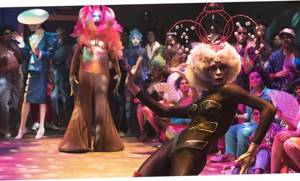
Most often, voguing is divided into three categories, and each style has its own nomination at the ball. Vogue performers can be professionals in only one direction, or they can express themselves perfectly in any style; there are absolutely no restrictions in this regard.
Femme
The most famous substyle of voguing is called Femme, and it is especially popular in Russia. Femvog dancers demonstrate exaggerated feminine movements, combining them with ballet and jazz step dances. The style is further divided into two categories: Soft and Dramatic . The first focuses on femininity and grace, the second on tricks and speed. Typically, judges evaluate several key elements - duckwalk and catwalk, spinning, floor performance, drop.
Duckwalk has been known to us since school days as “walking in single file”, but it needs to be done on half toes and with a perfectly straight back, throwing the leading leg forward. Catwalk, or cat walk, is an exaggerated walk along the catwalk with emphatically raised hips. Floor performance - elements that are danced on the floor. Spins - a series of rotations that often ends in a fall - drop . Dancers call the drop point at the end of a sentence because it is usually done at the very end of a measure and allows a new sentence to begin in the performer's story.
Old Way
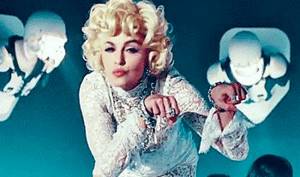
Old School Voguing represents '80s voguing, focusing on grace, precision, and precise poses. It is he who can be seen in Madonna’s “Vogue” video or the Pose series. Sharp angles, emphatically straight posture, and every movement should be performed as if this particular frame would end up on the cover of a glossy magazine.
New Way
"New School" focuses less on posing and more on working with unusual music and flexibility. Unnaturally curved limbs, working with geometric shapes, splits and pantomime - sometimes New Way dancers at balls look like real aliens.
Popular dances of our time
It is known that beautiful dance is not only grace, but also concern for health. Modern culture obliges a person to be harmonious and aesthetic in relation to his own body. Dancing classes help keep your body in good shape and are a great way to make new acquaintances and friends. Street and hip-hop dances performed in the RnB style are becoming increasingly popular around the world. But for quite many years, Latin American, folk and plastic dances have remained at the peak of the dance program. More and more dancers impress with their flexibility and add combinations of aerial elements, acrobatic performances and fragile plastic movements.
What can you watch about Vogue?
So far, very few films and TV series have been shot on this topic. The most famous documentary work about the Vogue style was made back in 1990 - “Paris on Fire”. This film follows the lives of several transgender people who live in France, their homes and the support they can only receive within the community.
The footage from another documentary, 2006's The Way I Look, was also taken in the '90s, but the director decided to document how dance and ballroom culture changed over the course of a decade.
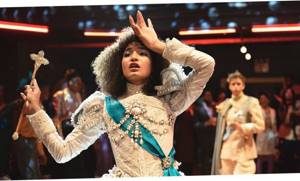
Last year, Ryan Murphy's series Pose was released, which with humor and scale tells about the lives of fictional characters participating in the balls. They cannot cope with social injustice alone and decide to create a home, become a real family to each other and look for new opportunities for self-expression in the face of financial problems. Right now the fX channel is broadcasting the second season of the project.
Types of popular couple dances
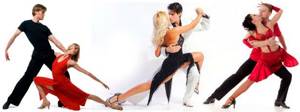
Dancing together is called pair dancing. This genre requires the presence of a companion. According to general rules, a man and a woman become partners. The roles are clearly distributed between the dancers: leader and follower, where the stronger sex is respectively assigned the first task. In this type, the main thing is the interaction between the participants. The entire dance period is spent in a duet. And even if several couples are dancing at the same time, each tandem moves independently of each other.
Pair dances did not originate today. Their development began in the 11th century, but even after centuries of changes they retain their uniqueness. The variety of dancing together was formed gradually. In the modern dance industry, there are the following types of pair dances:
Ballroom dancing
The name itself suggests their origin, because they originated and developed at balls in Europe in the Middle Ages.
These dances were rebuilt to suit different eras, and today they have 4 types of programs:
- European;
- Latin American;
- folk;
- additional.
The European group includes: tango, Viennese waltz, slow fox (slow foxtrot), quickstep (fast foxtrot), slow waltz. Latin American includes: paso doble, jive, rumba, cha-cha-cha, samba, latina.
The folk program includes Russian and Ukrainian lyrical dances, rilio (Lithuanian polka), krakowiak, and figure waltz. Additional ones are fashionable rock and Berlin polka.
Modern steam rooms
They are danced at discos, parties, parties and just on the street. Even those who did not dance as children quickly learn and develop in them.
These include: boogie-woogie and lindy hop; discofox and hustle; West Coast Swing (WCS); Argentine tango; kizomba; bachata.
Social
They are usually called that because their main feature is movement for themselves and communication in dance. These dances are dialogue, mutual exchange, conversation in body language. Partners freely improvise, spontaneously find movements, are inspired and charged with positivity from each other. They are not complicated and do not necessarily require a constant companion. He can be found at the corresponding party.
This group includes the modern pair dances considered and represents an impressive list: salsa, swing, Argentine tango, machiche, kizomba, West Coast Swing, forro, hustle, samba de gafieira, Lindy hop, zouk, bachata.
Such diversity is fascinating.
Advice. You should carefully and deeply penetrate the character of each dance in order to be more likely to understand how to find yours in the presented variety.
Dancing people have a good understanding of what suits them. And in order to understand which dances you probably need to know, let’s look at some of them in more detail.










